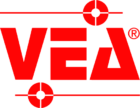Direct
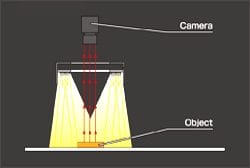
Angled
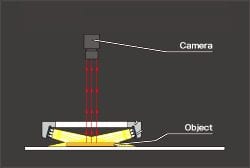
Spot
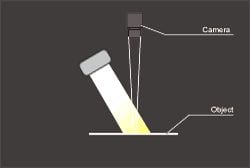
Dome
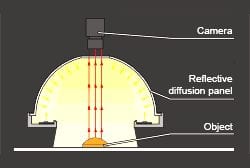
Backlighting
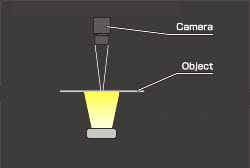
ILLUMINATORS FOR MACHINE VISION
Modularity, functionality and technology have always been a prerogative of VEA illuminators.
VEA illuminators are designed and manufactured with the experience of those who have been integrating vision systems for more than 25 years.
We know the problems of lighting in vision very well and we know the advantages of an appropriate and functional illuminator.
The LEF-C illuminators are ideal for robot guidance applications, have already included a camera mount and thanks to the slotted profiles can be easily connected to any support.
The use of selected and undersized LEDs allows you to obtain durations of more than 10 years without suffering decreases in brightness.
The LEC-C series, thanks to its modularity, has allowed to solve many vision problems, on vision sensors, smart-cameras and vision systems.
This series uses the latest materials and technologies.
The use of graphene improves the thermal conduction of the illuminators making them light and compliant with current ISO directives for industrial installations.
FDC-LED (Full Dissipated Chip LED) technology allows high brightness, low power consumption and low temperature.
The electronics included in the structure of the illuminator allow to keep the brightness constant even with strong variations of the input voltage.
The EL series uses electroluminescence technology that allows flexible illuminators to be produced in just 0.3 mm thickness.
On request we design and manufacture custom-made illuminators.
Typology:
- direct lighting
- coaxial lighting
- Circular low angle
- dome
- concentric circles
Typology:
- direct diffused lighting
- coaxial lighting
- robot guide
Typology:
- electroluminescent foils
- backlighting
- diffused lighting
- special lighting
LEC-C MODULAR
Advantages:
- extremely modular
- dozens of combinations
- cheap
- thickness only 12.5 mm
- homogeneous bundle
- no external bracket
- supports for cameras and vision sensors
- light
- standard industrial connector M8
Lighting technology:
- FDC-LED
Supporting technology:
- graphene polymer with controlled heat dissipation
Light transmission technology:
- PC correction lens
Power supply:
- integrated high frequency switching electronics
- 12V to 24V DC
Compliance with directives:
- EN 62471:2008 (photo biological risk)
- ISO 13732-1:2009 (Machinery Directive on operator thermal risk)
- ISO 15066:2016 ( collaborative robots)
LEF-C LARGE
Advantages:
- bulky
- integrated camera support
- connections on aluminium profile groove
- standard industrial connector M12
Lighting technology:
- LED-SMD
Supporting technology:
- graphene polymer with controlled heat dissipation
Light transmission technology:
- high diffusion multilayer polymer
Power supply:
- 24V DC direct
- external current-controlled power supply (optional)
Compliance with directives:
- EN 62471:2008 (photo biological risk)
- ISO 13732-1:2009 (Machinery Directive on operator thermal risk)
EL ELECTROLUMINESCENT
Advantages:
- thickness 0,3 mm
- deformable
- cut out
Lighting technology:
- ELECTROLUMINESCENCE
Supporting technology:
- flexible plastic support
Light transmission technology:
- flexible plastic support
Power supply:
- 6 - 24V DC via external power supply
Compliance with directives:
- EN 62471:2008 (photo biological risk)
- ISO 13732-1:2009 (Machinery Directive on operator thermal risk)
Advantages:
- extremely modular
- dozens of combinations
- cheap
- thickness only 12.5 mm
- homogeneous bundle
- no external bracket
- supports for cameras and vision sensors
- light
- standard industrial connector M8
Advantages:
- bulky
- integrated camera support
- connections on aluminium profile groove
- standard industrial connector M12
Advantages:
- thickness 0,3 mm
- deformable
- cut out
Lighting technology:
- FDC-LED
Lighting technology:
- LED-SMD
Lighting technology:
- ELECTROLUMINESCENCE
Supporting technology:
- graphene polymer with controlled heat dissipation
Supporting technology:
- graphene polymer with controlled heat dissipation
Supporting technology:
- flexible plastic support
Light transmission technology:
- PC correction lens
Light transmission technology:
- high diffusion multilayer polymer
Light transmission technology:
- flexible plastic support
Power supply:
- integrated high frequency switching electronics
- 12V to 24V DC
Power supply:
- 24V DC direct
- external current-controlled power supply (optional)
Power supply:
- 6 - 24V DC via external power supply
Compliance with directives:
- EN 62471:2008 (photo biological risk)
- ISO 13732-1:2009 (Machinery Directive on operator thermal risk)
- ISO 15066:2016 ( collaborative robots)
Compliance with directives:
- EN 62471:2008 (photo biological risk)
- ISO 13732-1:2009 (Machinery Directive on operator thermal risk)
Compliance with directives:
- EN 62471:2008 (photo biological risk)
- ISO 13732-1:2009 (Machinery Directive on operator thermal risk)
Typology:
- direct lighting
- spot lighting
- grazing light
Typology:
- backlighting
- indirect diffused lighting
Telecentric LEPs
Typology:
- backlighting for metrology
- spot lighting for metrology
LINEAR
Advantages:
- from 6 to 200 cm
- more than 200 models
- 4 types of light beams
- very high brightness
- 10000 LUX at 20 cm
Lighting technology:
- FDC-LED
- LED-SMD
Supporting technology:
- aluminium
Light transmission technology:
- monomer focusing lens made of diglycol allyl carbonate monomer
- PC speaker
Power supply:
- integrated high frequency switching electronics
- 12V to 24V DC
Compliance with directives:
- EN 62471:2008 (photo biological risk)
- ISO 13732-1:2009 (Machinery Directive thermal operator risk) excluding LEL-A
LER-C LARGE
Advantages:
- bulky
- connections on aluminium profile groove
- standard industrial connector M12
Lighting technology:
- LED-SMD
Supporting technology:
- aluminium
Light transmission technology:
- high diffusion multilayer polymer
Power supply:
- 24V DC direct
- external current-controlled power supply (optional)
Compliance with directives:
- EN 62471:2008 (photo biological risk)
- ISO 13732-1:2009 (Machinery Directive on operator thermal risk)
TELECENTRIC LEPS
Advantages:
- cheap
- connections on aluminium profile groove
Lighting technology:
- High Power LED
Supporting technology:
- aluminium
- graphene polymer with controlled heat dissipation
Light transmission technology:
- optical glass lenses
- PMMA fresnel lenses
Power supply:
- integrated high frequency switching electronics
- 12V to 24V DC
Compliance with directives:
- EN 62471:2008 (photo biological risk)
- ISO 13732-1:2009 (Machinery Directive on operator thermal risk)
Advantages:
- from 6 to 200 cm
- more than 200 models
- 4 types of light beams
- very high brightness
- 10000 LUX at 20 cm
- bulky
- connections on aluminium profile groove
- standard industrial connector M12
- cheap
- connections on aluminium profile groove
Lighting technology:
- FDC-LED
- LED-SMD
 
- LED-SMD
 
- High Power LED
Supporting technology:
- aluminium
 
- aluminium
 
- aluminium
- graphene polymer with controlled heat dissipation
Light transmission technology:
- monomer focusing lens made of diglycol allyl carbonate monomer
- PC speaker
 
- high diffusion multilayer polymer
 
- optical glass lenses
- PMMA fresnel lenses
Power supply:
- integrated high frequency switching electronics
- 12V to 24V DC
 
- 24V DC direct
- external current-controlled power supply (optional)
 
- integrated high frequency switching electronics
- 12V to 24V DC
Compliance with directives:
- EN 62471:2008 (photo biological risk)
- ISO 13732-1:2009 (Machinery Directive thermal operator risk) excluding LEL-A
 
- EN 62471:2008 (photo biological risk)
- ISO 13732-1:2009 (Machinery Directive on operator thermal risk)
 
- EN 62471:2008 (photo biological risk)
- ISO 13732-1:2009 (Machinery Directive on operator thermal risk)
LEM marker
Typology:
- metrology coded markers for wide spaces
LER-S special / LEF spot
Typology:
- backlighting
- indirect lighting
- spot lighting
LEC-80 coaxial
Typology:
- direct lighting
- coaxial lighting
LEM MARKER
Advantages:
- more than 500 combinations
- recognizable over 200 m
- monochromatic light
- very high brightness
Lighting technology:
- 9 High Power LED
- monochrome 460 nm
Supporting technology:
- aluminium
- graphene polymer with controlled heat dissipation
Light transmission technology:
- di-glycol allyl carbonate monomer focusing lenses
Power supply:
- external controlled-current power supply
- DC 24V
Compliance with directives:
- EN 62471:2008 (photo-biological risk) depending on configuration
- ISO 13732-1:2009 (Machinery Directive on operator thermal risk)
LER-S special / LEF spot
Advantages:
- custom design
Lighting technology:
- LED-SMD
- High Power LED
- FDC-LED
- LED-PTH
Supporting technology:
- aluminium
- graphene polymer with controlled heat dissipation
Light transmission technology:
- upon request
Power supply:
- upon request
Compliance with directives:
- EN 62471:2008 (photo biological risk)
- ISO 13732-1:2009 (Machinery Directive on operator thermal risk)
- ISO 15066:2016 ( collaborative robots)
LEC-80 coaxial
Advantages:
- narrow corner
- distance up to 2 m
- homogeneous bundle
- no external bracket
Lighting technology:
- LED-PTH
Supporting technology:
- fluoropolymer resin and glass fibre
Light transmission technology:
- PC lens
Power supply:
- DC 12V
- DC 24V
Compliance with directives:
- EN 62471:2008 (photo biological risk)
- ISO 13732-1:2009 (Machinery Directive on operator thermal risk)
Advantages:
- more than 500 combinations
- recognizable over 200 m
- monochromatic light
- very high brightness
- custom design
- narrow corner
- distance up to 2 m
- homogeneous bundle
- no external bracket
Lighting technology:
- 9 High Power LED
- monochrome 460 nm
- LED-SMD
- High Power LED
- FDC-LED
- LED-PTH
- LED-PTH
Supporting technology:
- aluminium
- graphene polymer with controlled heat dissipation
- aluminium
- graphene polymer with controlled heat dissipation
- fluoropolymer resin and glass fibre
Light transmission technology:
- di-glycol allyl carbonate monomer focusing lenses
- upon request
- PC lens
Power supply:
- external controlled-current power supply
- DC 24V
- upon request
- DC 12V
- DC 24V
Compliance with directives:
- EN 62471:2008 (photo-biological risk) depending on configuration
- ISO 13732-1:2009 (Machinery Directive on operator thermal risk)
- EN 62471:2008 (photo biological risk)
- ISO 13732-1:2009 (Machinery Directive on operator thermal risk)
- ISO 15066:2016 ( collaborative robots)
- EN 62471:2008 (photo biological risk)
- ISO 13732-1:2009 (Machinery Directive on operator thermal risk)
